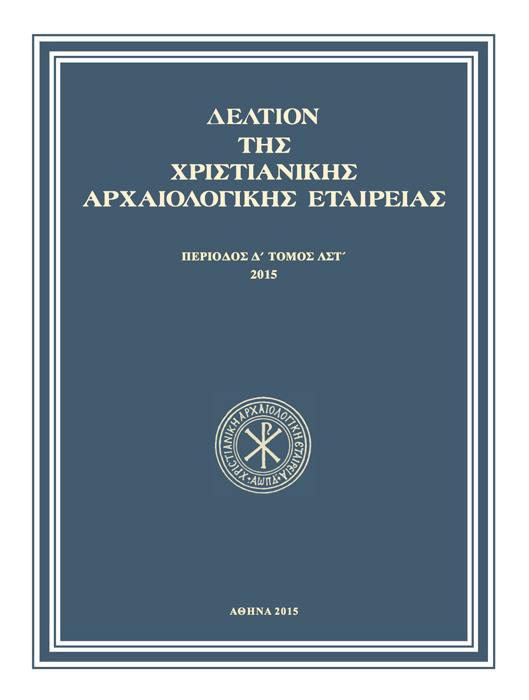Piété privée et processus de production artistique à Byzance: À propos d’un enkolpion Constantinopolitain (XIIIe-XIVe siècle)

Abstract
A silver enkolpion with stamped decoration was found in 1987 at the Belgratkapı (Xylokerkos) Gate in Istanbul among a Palaiologan coin hoard. The object helps illustrate the development of new devotional patterns and their transmission from the upper echelon of society to the broader base. The iconography of coins and seals serves as a major prototype for the production of enkolpia, while a network of imitations reflecting close contacts between various categories of artisans explains the recurrence of similar decorative patterns from individually worked pieces in precious materials to mass- produced items in cheaper materials. The images of the two Saints Theodore with Daniel in the lion’s den on the two sides of the Belgratkapı enkolpion further illustrate the networks of influence between Constantinople, the Balkans, and the West.
Article Details
- How to Cite
-
PITARAKIS, B. (2016). Piété privée et processus de production artistique à Byzance: À propos d’un enkolpion Constantinopolitain (XIIIe-XIVe siècle). Deltion of the Christian Archaeological Society, 36, 325–344. https://doi.org/10.12681/dchae.1792
- Section
- Articles

This work is licensed under a Creative Commons Attribution-NonCommercial-ShareAlike 4.0 International License.
The copyright for articles in the journal Deltion of the Christian Archaeological Society (henceforth Deltion) is retained by the author(s), with first publication rights granted to the journal and to EIE/ EKT the right to store and communicate these articles to the public via its information infrastructures. By virtue of their appearance in this journal, articles are free to use with proper attribution for non-commercial uses under a ShareAlike obligation. The Christian Archaeological Society and EIE/EKT retain the worldwide right to reproduce, display, distribute, and use articles published in the Deltion in all formats and media, either separately or as part of collective works for the full term of copyright. This includes but is not limited to the right to publish articles in an issue of the Journal, copy and distribute individual reprints of the articles, authorize reproduction of articles in their entirety in another publication of the Christian Archaeological Society, and authorize reproduction and distribution of articles or abstracts thereof by means of computerized retrieval systems.


